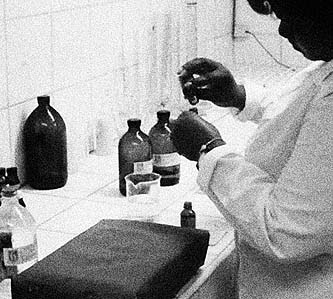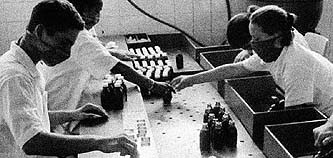Integrating the practice of traditional and natural medicine into the health system
What problem does it solve?
The way natural medicine first develops is the same all over the world, no matter where it is practised. In Cuba, the use of traditional and natural medicine came about in two broad stages: the first characterised by isolated examples of practices of 'green' medicine, acupuncture, mud therapy, etc., and the second involving the gradual introduction of TRM into the national health system. This last process began at the beginning of the 1990s when the Health Ministry (MINSAP) became aware of the need to revitalise traditions in the use of medicinal plants, and introduce the therapeutic resources of traditional Chinese medicine. This was when training for TRM specialists and studies in homeopathy were first introduced, and thermal and spa water resources were regenerated throughout the country.
March 1995 saw the creation of the Inter-ministerial TRM Development Commission, followed in September by the MINSAP Traditional and Natural Medicine Department. In 1996, the Programme for the Development of Traditional and Natural Medicine was approved, and in 2002 the Council of Ministers' Executive Committee adopted Agreement 4282. This agreement established a series of measures, including, most importantly, the creation of the National TRM Development Centre to direct the activities of the programme throughout the country.
TRM is especially useful in areas with poor health service facilities and in the event of natural or man-made disasters and epidemics. Some natural and traditional medicine therapies and procedures only require trained medical personnel and a minimal amount of resources and equipment that can mostly be supplied locally. Thus, it can be used to provide highly effective primary medical assistance in areas without social services, and in the event of earthquakes, hurricanes, fires, droughts and other catastrophes.
The integration of TRM methods into national health services is all the more feasible in countries, regions or locations where governments are already taking serious steps to improve health assistance. TRM provides real support to local institutions that are striving to achieve sustainable development in the service sector and preserve their environmental heritage, which in turn increases opportunities for decent work.
The integration of TRM into the national health system can bring the added benefit of helping conciliate the diversity of existing criteria on how to tackle health and illness, since it can employ a health care strategy and model that brings together conflicting tendencies in many parts of the world: medicine as a product of technology and as the result of traditional knowledge and culture. It also promotes the convergence of curative and preventative approaches in medical schools, since the unification of these two concepts is one of its main advantages. In effect, it promotes greater quality in the health services, because it extends the range of therapeutic possibilities that doctors have at their disposal to solve the problems they have to face. As well as resolving or helping to resolve the problems of the population less expensively, it also shows individuals how to overcome some of their ailments by themselves, and how to lead a healthier way of life.
The development of TRM depends on the joint participation of various social stakeholders, including non-government organisations, the mass media, local authorities and leaders, since specific analysis is required in areas where this process is to be promoted.
In Cuba, natural and traditional medicines are studied as sciences and techniques and are part of the Health Ministry’s Ramal Programme. At present there are 191 protocols concerning research, medical plants, acupuncture, peloids, and mineral and medical waters amongst others. Favourable public opinion and improved services more than justify its use.
TRM resources can be employed by highly qualified professionals as well as unqualified practitioners, once they receive special training. The practice of traditional medicine can generally be provided at very low cost.
Although economic studies are notoriously difficult to conduct, solid arguments exist for TRM to be employed in areas where there are insufficient resources, or in the presence of natural or man-made disasters. In these cases, trained personnel can resolve the most diverse health problems just by utilising their own capabilities, the resources that are locally available, and simple instruments and equipment, thus providing social and economic benefits of inestimable value.
At the same time, the inclusion of TRM within national health systems means services can be extended to a broader sector of the population since available resources can be used more efficiently by applying less costly techniques in primary health care, such as the medical use of natural resources. Moreover, whenever TRM is employed in health services, it enhances medical practice, improves the quality of health care and broadens capacity for resolving problems.
DOWNLOAD THE BROCHURE PDF
english (1.1 MB)spanish (1.1 MB)
serbian (0.5 MB)
ONLY TEXT
•Traditional and Natural Medicine in practice
•The employment of Traditional and natural medicine in other countries








 COUNTRY OF ORIGIN
COUNTRY OF ORIGIN